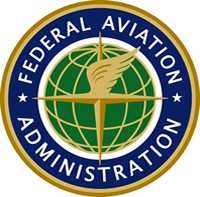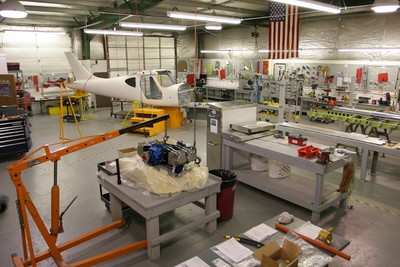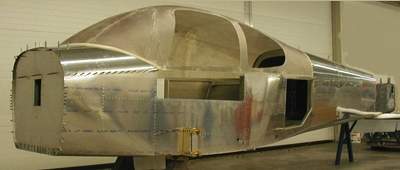ARC Will Revisit The "51-Percent" Rule
 With the advent of new
fabrication techniques and manufacturer-supported "builder-assist"
programs, one could argue the definition of an "amateur-built"
aircraft isn't what it used to be.
With the advent of new
fabrication techniques and manufacturer-supported "builder-assist"
programs, one could argue the definition of an "amateur-built"
aircraft isn't what it used to be.
On Friday, the FAA posted notice in the Federal Register that,
until further notice, the agency's Aircraft Certification Service
has suspended courtesy inspections of aircraft kits for
"amateur-built" status. The purpose of these evaluations was to
indicate if a prefabricated amateur-built aircraft kit could be
eligible for certification as an amateur-built aircraft.
The Federal Aviation Administration (FAA) Aircraft Certification
Service established an Amateur-Built Aviation Rulemaking Committee
(ARC) on July 26, 2006. The ARC was made up of representatives from
the FAA, aircraft kit manufacturers, commercial assistance center
owners, and associations. The purpose of the ARC was to make
recommendations regarding the use of builder or commercial
assistance when fabricating and assembling amateur-built aircraft
under FAR 21.191(g) -- the so-called "51 percent" rule.
FAR 21.191(g) defines an amateur-built aircraft as "an aircraft
the major portion of which has been fabricated and assembled by
persons who undertook the construction project solely for their own
education or recreation." In essence, that means for an aircraft to
be declared as amateur-built, the builder must complete
construction on the majority of the aircraft's components
themselves -- without undue assistance from the kit's
manufacturer.
That rule -- or, at least, the spirit of it -- wasn't in dispute
when most 'homebuilt' planes were, in fact, completed in the
builder's home, hangar, or garage... fabricated from raw materials
or a finite number of preassembled components, from a set of plans.
In recent years, however -- particularly with the onset of
composite construction -- several kit manufacturers started
shipping "quick-build" kits, with major subassemblies already
fashioned.

Many of those kitmakers also launched builder assistance
programs. Some even allow the builder access to a professional
facility in which to complete their aircraft, all the tools they
need, and assistance from company representatives. The aircraft
themselves have also become far more advanced -- with companies
offering 'homebuilt' high-performance, pressurized turboprops and
even jets, that frankly couldn't be completed without some
assistance from professionals.
Those companies maintain their programs are in keeping with the
51 percent rule, as builders still must complete the majority of
assembly to the aircraft. However, the ARC has since concluded the
current FAA Directives and Advisory Circulars are no longer
adequate.
"Current technologies that allow for the fabrication and
assembly of sophisticated amateur-built aircraft were not
envisioned at the time § 21.191(g) was promulgated or when the
current forms and methodology were developed," the agency states.
"Most amateur-built aircraft kits were generally simple to
fabricate and assemble and did not require commercial builder
assistance. FAA has provided the aforementioned amateur-built kit
evaluations in response to manufacturer’s requests to
determine if the percentage of the kit completed by the
manufacturer would leave the major portion (51%) of the work to be
completed by the amateur-builder.

"These evaluations are not a regulatory requirement," the agency
adds. "Rather, these evaluations have been a courtesy that FAA has
provided for the convenience of the kit manufacturers, their
customers, and FAA Inspectors. These evaluations have allowed the
FAA to pre-evaluate amateur-built kits to determine (when built
according to the manufacturer’s instructions) if the kits
could be eligible for an Experimental Airworthiness Certificate
under 14 CFR Part 21 § 21.191, Experimental Certificates. When
a kit has been found to be eligible, it is added to the FAA’s
kit listing, which is available via the internet to prospective
buyers. These kit evaluations inform prospective applicants that
they could be eligible for an experimental amateur-built
airworthiness certificate if they completed their aircraft in
compliance with the FAA-evaluated assembly and instruction manuals
and fabricated and constructed the aircraft in compliance with 14
CFR part 21, § 21.191(g). The method of determining what
constitutes the major portion of construction has undergone several
changes since the rule was first codified."
The FAA also notes manufacturers offering assistance have
allowed amateur-builders to "share credit" for assembly of
components with the manufacturer -- a loophole the agency says must
be revisited.
"When FAA staff developed the commonly used form 8000–38,
"Fabrication and Assembly Operation Checklist", to calculate major
portion, the intent was that a single check mark in a column on the
form would identify who did the task," the agency states. "Some
manufacturers and FAA representatives calculate major portion by
using a "task-based" accounting mechanism that incorporates a
"dual-check" system whereby an amateur-builder may be given shared
credit even if that person does not complete 50% of the task. When
this is used in practice, the kit manufacturer and amateur-builder
share credit on the Form 8000–38.
"It was not envisioned that credit for a task would be offered
to an amateur-builder simply assisting in the fabrication and
assembly, as is happening today in some cases," the FAA
concludes.

The FAA plans to resume amateur-built kit evaluations after
issuing final policy changes. Prior to publishing the final policy,
FAA will solicit comments on draft policy, internal orders and
advisory circulars through a notice in the Federal Register.
The agency stressed that while kit evaluations have been
suspended, amateur-built kit manufacturers may continue to develop,
manufacture, market and sell their aircraft kits. Airworthiness
certifications conducted by the FAA in response to requests from
amateur-builders for their individually fabricated and constructed
aircraft will continue.
 ANN's Daily Aero-Term (12.13.25): Light Gun
ANN's Daily Aero-Term (12.13.25): Light Gun Aero-News: Quote of the Day (12.13.25)
Aero-News: Quote of the Day (12.13.25) NTSB Final Report: Gippsland GA-8
NTSB Final Report: Gippsland GA-8 Classic Aero-TV: Historically Unique -- Marlin Horst's Exquisite Fairchild 71
Classic Aero-TV: Historically Unique -- Marlin Horst's Exquisite Fairchild 71 Airborne 12.12.25: Global 8000, Korea Pilot Honors, AV-30 Update
Airborne 12.12.25: Global 8000, Korea Pilot Honors, AV-30 Update






